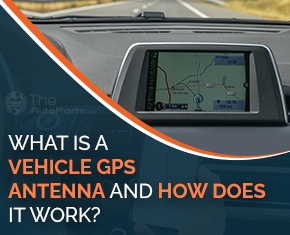A vehicle GPS antenna is a system that is used for receiving & expanding radio frequency signals that are sent by various distinct frequencies probably coming out from the GPS satellite. GPS antennas convert them in the form of electronic signals that can be used by the GPS recipients. The time the receiver gets the output from the GPS antenna, it can evaluate the position accurately.
GPS Antennas; It’s Different Types
The GPS Antennas would be external, internal, passive, and active. GPS known as Global Positioning System is effective only when they can get the signals right from the satellites. Moreover, for attaining all this, you require some types of antenna too. Most GPS devices, like portable navigation systems and cell phones, include internal antennas that are built internally in the system. Though some of the systems give you the alternative to add up an exterior GPS antenna, there are scenarios where they are costly.
Active & Passive GPS Antennas: Major Difference
Generally, there are two types of GPS antennas which are installed at the backside of your vehicle or over your cell phone. These antennas are namely; active & passive antennas. Usually, the passive antennas acquire the GPS signals and convey them further to the GPS navigation system.
On the contrary, the active antennas are tailored with robust amplifiers that enable them to pick up signals from larger distances. Also, the signals received by these antennas that are amplified are much more sturdy than a GPS system.
Because of all these reasons, active antennas are much costlier and are harder to be installed than passive antennas. You may, however, put them further away than your GPS tracker. As a result, active antennas are better suited for large vehicles or situations requiring a steady signal.
What Are GPS Signal Interferences?
GPS gadgets are only useful if they can receive signals from several satellites. GPS gadgets can detect its precise location on Earth based on how strong the satellite signals are. On a digital map, you will often notice a dot. This indicates your current location.
Nevertheless, if an interference thwarts a GPS device’s signal, it will be unable to identify satellite signals. Sadly, this might lead to inaccuracy or inability to determine the device’s position. Tall structures and car metal roofs are two prominent sources of signal interruptions.
These signal instabilities can be reduced by placing your GPS gadget near a car window. Although this isn’t always the greatest option. For example, bigger roofs might obstruct signals more than smaller ones. Tinted windows also contain microscopic metal particles that might interfere with GPS signals.
How Does A GPS Antenna Work?
Internal antennas are commonly found in a variety of GPS navigation systems. They operate properly in most situations, but in other cases, an extra antenna is required to provide information to the GPS system.
This is frequently used when there is a significant blockage between the sky and the GPS unit. External antennas are also useful for older GPS systems that do not have the most up-to-date internal antennas. If your GPS unit is unable to detect an accurate signal, you may require an extra antenna.
You might, however, try moving around within your vehicle to acquire a stronger signal. However, if it is unable to resolve your blockage and interference issues, the ideal approach would be to install an amplified external antenna.
However, if you’ve been using your GPS gadget for a long time and have never had any signal interference, you don’t require an extra antenna. However, if you are constantly suffering signal loss or receiving wrong information, it is essential to acquire an external antenna to resolve this issue. External antennas are particularly beneficial while traveling in isolated areas where the GPS signal is uncertain.
Do you have any project that requires GPS antennas or any other car parts and accessories? If so, then visit The Auto Parts Shop now!!!
